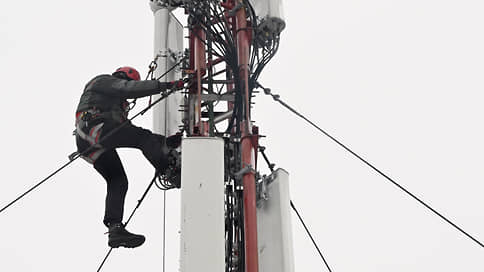The base is liquefied under the connection – Newspaper Kommersant No. 21 (7466) dated 02/06/2023
[ad_1]

In 2022, operators have reduced the volume of installation of new base stations by more than 60%, analysts have calculated. First of all, the lack of foreign equipment from Nokia, Ericsson and Huawei affected: stocks were mainly used to repair existing networks, new ones were almost not deployed. To maintain the quality of service, companies began to actively use frequency refarming and improve the efficiency of network management. As a result, the transmission speed decreased slightly, but experts believe that they managed to maintain the indicators due to the reduction in traffic volumes.
The analytical agency Telecom Daily calculated that domestic telecom operators installed 60% fewer base stations in 2022 than in 2021. In 2021, according to the same Telecom Daily, about 82 thousand stations were installed. Alexander Sivolobov, Deputy Head of the Skoltech-based NTI Competence Center for Wireless Communications and the Internet of Things, confirmed a reduction in the installation of new base stations in 2022. According to his preliminary estimate, about 25-30 thousand stations were put into operation in 2022. In 2023, the expert believes, this number will drop to 10-15 thousand. MForum Analytics analyst Alexei Boyko believes that the number of new base stations has fallen by more than 50%.
Before the departure of the leading equipment vendors in the face of Nokia, Ericsson and Huawei from Russia due to the outbreak of hostilities in Ukraine, Russian operators stocked up on equipment, but use it only to replace failed base stations, says Telecom Daily CEO Denis Kuskov: “Reduction of new construction networks in 2022 affected primarily remote regions. According to Alexey Boyko, the equipment of the departed vendors still occupies more than 90% of the fleet of installed base stations in the Russian Federation.
The largest telecom operators did not comment on estimates of the reduction in the number of base stations put into operation. Tele2 “Kommersant” only stated that they have sufficient stocks of equipment to “maintain and improve” the quality of services.
MegaFon added that in addition to building base stations, operators “have other tools for network development”, in particular, frequency refarming, as well as targeted improvement of technical characteristics through effective management. VimpelCom and MTS declined to comment.
Mr. Kuskov, referring to data from the MegaBitus service, said that in 2022 the transmission speed in mobile data networks fell in general from 24 Mb / s to 22 Mb / s: “By the end of 2023 or at the beginning of 2024, the speed may decrease by another 3-4 Mb/s if the number of base stations to be placed is not increased,” the expert believes. The average speed has “slightly dropped” and this year the decline may continue, agrees Mr. Boyko.
Since the time of the pandemic, the networks of Russian operators have accumulated a significant margin of safety, there is still a reserve of equipment in warehouses, and the growth in subscriber traffic is not as great as five years ago, objects Mr. Sivolobov.
The decline in traffic growth is also confirmed by Denis Kuskov. According to him, traffic increased by 30% in 2022, while during the 2020 pandemic, the growth was 80%: “If there was such an indicator now, the data transfer rate would drop more. But due to the reduction in traffic, the strength of the networks is still enough, which gives time to switch to Russian equipment.”
The Ministry of Digital Resources assured that they are introducing measures to support manufacturers and telecom operators in order to cover the need for the required number of base stations: “We are working with telecom operators to prevent communication deterioration. Operators will gradually switch to Russian equipment.”
At a meeting of the State Commission on Radio Frequencies in December 2022, Russian telecom operators were obliged to use only equipment included in the domestic register for the construction of networks from 2025. At the end of the year, Russian operators also began entering into forward contracts with Russian vendors, including Yadro, Bulat and others (see Kommersant dated October 5, 2022). Deliveries should begin in 2023, it is planned to equip with equipment primarily remote and sparsely populated regions.
[ad_2]
Source link





